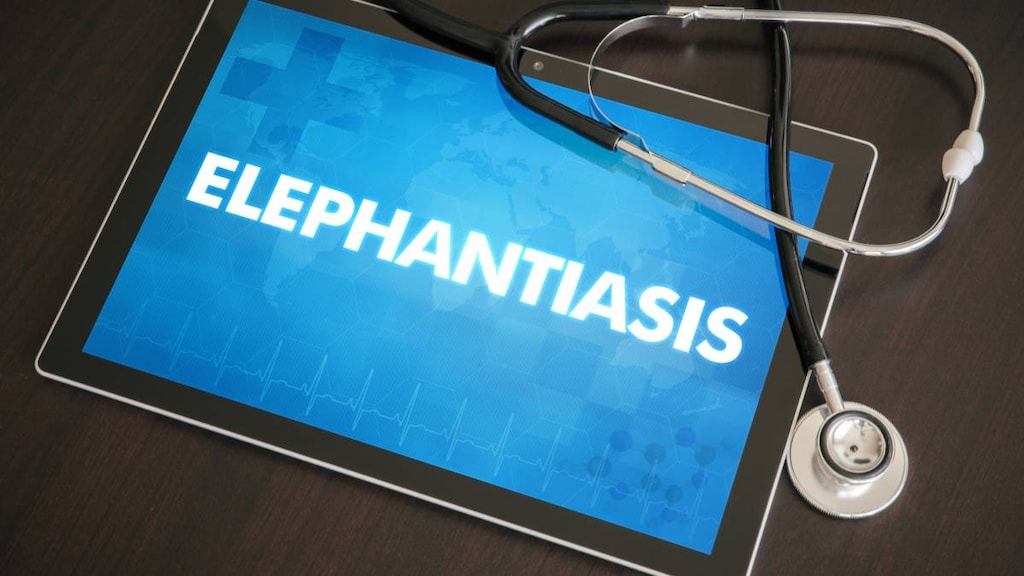
What is filariasis (elephantiasis)?
Filariasis is a condition caused by the obstruction of the lymph vessels in the lymphatic system, causing extensive swelling typically in the arms and legs, and sometimes other areas of the body, such as the genitals.
Filariasis may also be called elephantiasis, or lymphatic filariasis when it is caused by a parasite.
What causes filariasis?
Filariasis is caused by an obstruction to the lymph vessels of the lymphatic system.
Our lymphatic system is made up of an extensive network of interconnecting vessels, interspersed with small structures, called lymph nodes, that filter out microorganisms and other foreign bodies. The spleen, which filters out old red blood cells and produces lymphocytes; the tonsils, which are large masses of lymphatic tissue; the thymus; and bone marrow are all part of our lymphatic system.
An obstruction to the lymphatic system can occur because of:
- Parasites. Brugia malayi, Brugia timori, and Wuchereria bancrofti are three different species of roundworm that can cause lymphatic filariasis. These are more commonly found in underdeveloped regions of South America, Central Africa, Asia, the Pacific Islands, and the Caribbean. Infected mosquitos introduce the larval form of these worms into the human body when they bite the skin
- Bacterial sexually transmitted diseases, such as lymphogranuloma venereum and donovanosis, which can cause genital elephantiasis. Lymphogranuloma venereum is caused by the bacterium Chlamydia trachomatis serovar L1-L3 which damages the lymphatic system in the genitals. Donovanosis is caused by the immune system reacting to the bacterium, Calymmatobacterium (klebsiella) granulomatosis which causes inflammation and narrowing of the lymphatic vessels
- Podoconiosis. This is caused by the absorption of minute mineral particles from the soil through the soles of the feet. The immune system reacts to these particles causing inflammatory masses (called granulomas) to form in the lymph vessels of the feet and legs
- Leishmaniasis, a protozoan disease
- Tuberculosis
- Leprosy
- Repeated streptococcal infection
- Untreated lymphedema that occurs due to trauma, surgery, or radiation.
Sometimes no reason for the filariasis can be found.
What are the symptoms of filariasis?
Obstruction of the lymph vessels initially causes mild edema (swelling) which can gradually progress and worsen if not treated. Symptoms of filariasis (elephantiasis) depend on the cause and may include:
- Gross enlargement and swelling of an area of the body (most often the arms and legs) due to the accumulation of fluid. Swelling of the limbs to several times their normal size occurs, resembling the thick, round appearance of an elephant’s leg
- The skin on affected areas develops a dry, thickened, pebbly appearance and may become pitted, discolored, and thickened
- Fever
- Chills
- Tiredness or general malaise
- Enlargement of the scrotum and retraction of the penis under the skin
- The vulva in women may swell and thickened and ulcerated skin may develop between the thighs accompanied by enlarged lymph nodes. Breast enlargement may also occur
- Pain and burning in the genital area
- Increased susceptibility to bacterial and fungal infections.
How is filariasis diagnosed?
If you develop symptoms of filariasis, see your doctor. Your doctor will take your history and perform a physical examination. Tests will be conducted to try and determine the reason for the underlying lymphatic damage.
How is filariasis treated?
Treatment of filariasis involves treating the underlying condition and may include:
- Compression therapy and garments
- Anthelmintics
- Diethylcarbamazine
- Antibiotics for filariasis caused by a bacterial infection
- Surgery
- Supportive therapy.




